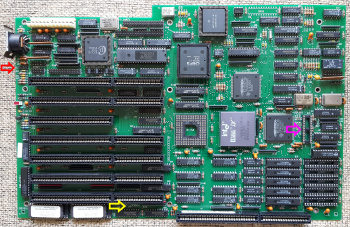jh1523
Experienced Member
Has anyone ever seen one of these? It's a 386DX mobo, which (as per the docs I found online) can come with either a 20, 25 or 33 MHz CPU. I don't know if the CPU is soldered or socketed though.
The reason I'm asking is because I found one of these online pretty cheap, but have no picture of it. It also comes with the proprietary memory card, so even a better deal.
The reason I'm asking is because I found one of these online pretty cheap, but have no picture of it. It also comes with the proprietary memory card, so even a better deal.

